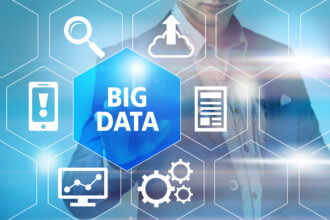Influencers are rapidly transforming the digital marketing landscape. Nearly two out of five plan to increase their influencer marketing budgets substantially in the coming year. Only 7% of respondents in a recent poll spent less than $10,000 on influencer marketing. However, many brands are still struggling to cultivate their ideal influencer marketing strategy. The savviest marketers are leveraging big data to formulate better insights into the ROI of their influencer campaigns and identify ways to optimize them better. Todd Crawford, the cofounder of Impact Radius discussed this in a previous interview. ?The challenge there is to have an easy, turn-key way to have those partners working with you, and have them track and measure the activity they’re doing,? said. There are plenty of ways to use big data to bolster the effectiveness of your influencer strategy. Here are some ideas to consider.
Big data helps identify the areas of specialization to look for in influencers
An influencer might be brilliant and charismatic, but that doesn?t mean that they will be a worthy ambassador for your brand. Every influencer has their own niche message and unique audience. Their message might be appealing to customers of other companies, but they would not engage with your customers at all. You need to take a granular look at all of your data before choosing an influencer. There are a few things that you need to be aware of. First of all, it is important to choose an influencer that has pull in your industry. More specifically, you need to make sure they are a recognized authority on the specific types of products that you are looking to promote. Since you probably will use different influencers for various products and services, it is a good idea to work with different influencers that can serve as brand ambassadors for each of those product categories. You also need to make sure that they appeal to the right audience. You need to make sure that you understand the demographic you are pursuing and the reach and influencer has with that customer base. According to an expert from NoxInfluencer, big data helps brands in this area into different ways:
- You can use internal and third-party data to learn more about your target customers and the products that are most popular with your customers. Many organizations that produce diverse product lines, such as drop shipping companies, find that only a small fraction of their products are profitable. Big data tracking tools and Hadoop data mining solutions make it easier for them to determine the popularity of different products in their inventory. McKinsey published a report discussing the use of big data for monitoring sales.
- Big data also makes it easier for them to identify the customers with the highest conversion rates. Companies can use demographic conversion data from there PPC, Facebook or other online marketing platforms. The data they collect well then be useful for optimizing their influencer campaigns.
- Brands can use Hadoop and other data mining tools to evaluate the reach of the influencers they are considering working with. There are a lot of analytics tools that show the demographics, region and other relevant engagement data from various influencers.
Collecting data on your own customers and influencers will help you identify the right influencers to focus on working with.
Monitoring the engagement data from different influencers
You might have selected a number of promising influencers to work with. They might appeal to the right audience, have a strong following and be recognized experts in the vertical that you are trying to promote. However, the performance of some influencers is going to be a lot higher than others. The only way to know which influencers are adding to your ROI is to analyze the traffic and conversion as they are referring to you. There are numerous analytics tools that are ideal for this. Google Analytics uses big data to help brands get a deeper understanding. Crazy Egg is it another excellent analytics and optimization tool that would not be possible without big data. You need to collect as much data as possible on your influencer campaigns to see which influencers are yielding the best returns.










